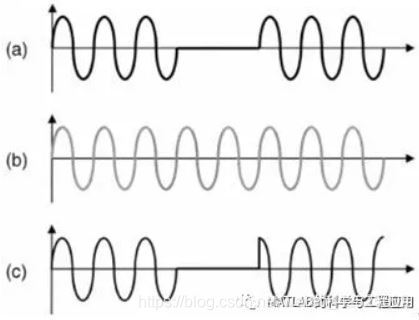【讀書2】【2014】基於MATLAB的雷達訊號處理基礎(第二版)——接收機(3)
圖1.9指出了對高質量接收機設計的幾個要求。
Figure 1.9 implies several requirements ona high-quality receiver design.
例如,本地振盪器與發射機頻率必須是相同的。
For example, the local oscillator and thetransmitter frequencies must be identical.
通常通過在雷達系統中設計一個穩定的本地振盪器(STALO)來確保,該振盪器為發射機和接收機提供頻率基準。
This is usually ensured by having a singlestable local oscillator (STALO) in the radar system that provides a frequencyreference for both the transmitter and the receiver.
此外,許多型別的雷達處理都需要進行相干操作。
Furthermore, many types of radar processingrequire coherent operation.
IEEE標準的雷達定義中將“相干訊號處理”定義為“利用稱為相干振盪器的訊號幅度和相位進行回波積累、濾波或檢測”(重點補充)(IEEE,1982)。
The IEEE Standard Radar Definitions defines"coherent signal processing" as “echo integration, filtering, ordetection using amplitude and phase of the signal referred to a coherentoscillator” (emphasis added) (IEEE, 1982).
相干性比頻率穩定性的要求更高。
Coherency is a stronger requirement thanfrequency stability.
在實際的設計中,對於多個連續的脈衝來說,相干性意味著雷達發射的這些載波訊號脈衝的相位基準總是保持不變的。
In practice, it means that the transmittedcarrier signal must have a fixed phase reference for several, perhaps many,consecutive pulses.
考慮時刻t1發射的脈衝訊號a(t – t1) sin[Ω(t– t1) + ϕ],其中a(t)為脈衝包絡。
Consider a pulse transmitted at time t1of the form a(t – t1) sin[Ω(t – t1) + ϕ], where a(t) isthe pulse shape.
在一個相干系統中,t2時刻發射的脈衝表示式為a(t – t2)sin[Ω(t – t1) + ϕ]。
In a coherent system, a pulse transmittedat time t2 will be of the form a(t – t2) sin[Ω(t – t1)+ ϕ].
注意:兩個時刻的sine項具有相同的相位Ω(t – t1) + ϕ,只是訊號包絡隨時間軸發生變化。
Note that both pulses have the sameargument Ω(t – t1) + ϕ for their sine term; only the envelope termchanges location on the time axis.
這樣,兩個正弦訊號的參考基準都是相同的絕對起始時間和相位。
Thus, both sinusoids are referenced to thesame absolute starting time and phase.
This is as opposed to the second pulsebeing of the form a(t – t2) sin[Ω(t – t2) + ϕ], which isnonzero over the same time interval as the coherent pulse a(t – t2)sin[Ω(t – t1) + ϕ] and has the same frequency, but has a differentphase at any instant in time.(似乎本句無翻譯必要!)
圖1.12直觀地描述了相干與非相干訊號的差別。
Figure 1.12 illustrates the differencevisually.

圖1.12 相干訊號中的固定相位基準描述。(a)由基準正弦波產生的相干脈衝對;(b)參考正弦波;(c)非相干脈衝對。Illustration of the conceptof a fixed phase reference in coherent signals. (a) Coherent pulse pairgenerated from the reference sinusoid. (b) Reference sinusoid. © Noncoherentpulse pair.
在相干情況下,兩個脈衝看起來像是從同一連續的、穩定的正弦波中擷取的;在非相干情況下,第二個脈衝與第一個脈衝的延拓相位是不一致的。
In the coherent case, the two pulses appearas if they were excised from the same continuous, stable sinusoid; in thenoncoherent case, the second pulse is not in phase with the extension of thefirst pulse.
根據前面討論的相位模糊問題,相干性也意味著該系統必須包含I、Q兩個通道,否則無法提取訊號的相位特徵。
Because of the phase ambiguity discussedearlier, coherency also implies a system having both I and Q channels.
另一個要求是I、Q通道在訊號頻寬上必須具有完全匹配的傳遞函式。
Another requirement is that the I and Qchannels have perfectly matched transfer functions over the signal bandwidth.
這樣,兩個訊號通道的增益和相位延遲(電長度)都必須是一致的。
Thus, the gain through each of the twosignal paths must be identical, as must be the phase delay (electrical length)of the two channels.
當然,實際中的接收機是不可能具有完全匹配的傳輸通道。
Of course, real receivers do not haveperfectly matched channels.
第三章中將考慮接收機中增益和相位不平衡的影響。
The effect of gain and phase imbalanceswill be considered in Chap. 3.
——本文譯自Mark A. Richards所著的《Fundamentals of Radar Signal Processing(Second edition)》
更多精彩文章請關注微訊號:
